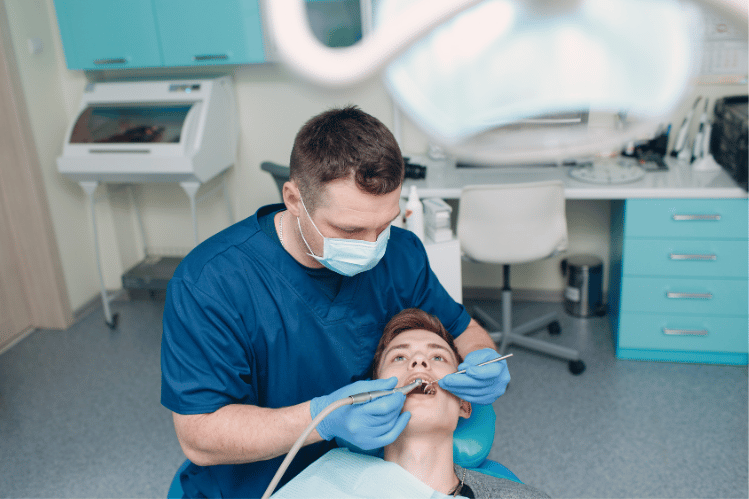
As orthodontic treatment becomes more common and accessible, it is no longer only associated with children and teenagers. In fact, a growing number of adults are opting for orthodontic treatment to improve the appearance and function of their teeth.
While the basic principles of orthodontic treatment remain the same for both children and adults, there are some key differences in how treatment is approached for each group. In this article, we'll explore these differences and what adults can expect from orthodontic treatment.
Introduction
There are many reasons why adults may choose to undergo orthodontic treatment. Some may have missed out on treatment when they were younger and are now seeking to correct dental problems that have developed over time.
Others may have had treatment as a child, but their teeth have since shifted due to factors such as aging, tooth loss, or injury. In some cases, adults may also seek orthodontic treatment to improve their bite or to address jaw joint issues such as TMJ disorder.
Key differences in adult orthodontic treatment
While the underlying principles of orthodontic treatment are the same for both adults and children, there are some key differences in how treatment is approached for each group. These include:
a. Bone density:
Adults typically have denser bone tissue than children, which can make tooth movement slower and more difficult. This means that orthodontic treatment for adults may take longer than for children.
b. Gum health:
Adults are more likely to have gum disease or other periodontal issues than children, which can complicate orthodontic treatment. In some cases, gum disease may need to be treated before orthodontic treatment can begin.
c. Growth and development:
Unlike children, adults have already completed their growth and development. This means that certain orthodontic techniques such as expansion appliances may not be effective for adults.
d. Tooth wear:
Adults are more likely to have experienced tooth wear due to factors such as grinding or aging. This can make treatment more complex and may require additional procedures such as restorative work.
e. Jaw joint issues:
Adults may be more likely to have issues with their jaw joints, such as TMJ disorder. This can complicate orthodontic treatment and may require the involvement of a specialist such as an oral surgeon or a TMJ specialist.
Types of orthodontic treatment for adults
There are several types of orthodontic treatment that may be appropriate for adults. These include:
a.Traditional braces:

Metal braces are the most common type of orthodontic treatment and can be used to correct a wide range of dental problems. While they are not as discreet as some other options, they are often the most effective.
b.Clear aligners:

Clear aligners such as Invisalign are a popular option for adults because they are virtually invisible and can be removed for eating and brushing. They are also typically more comfortable than traditional braces.
c.Lingual braces:

Lingual braces are similar to traditional braces, but they are attached to the back of the teeth instead of the front. This makes them virtually invisible, but they can be more difficult to clean and adjust than traditional braces.
d. Self-ligating braces:
Self-ligating braces are similar to traditional braces, but they use a different mechanism for holding the wire in place. Instead of elastic ties, they use a small clip to hold the wire in place. This can make them more comfortable and reduce the number of appointments needed for adjustments.
How to choose the right orthodontic treatment
When choosing an orthodontic treatment, it's important to consider factors such as the severity of the dental problem, the cost of treatment, and personal preferences. It's also important to choose a qualified and experienced orthodontist who can recommend the best treatment option for your specific needs.
Start your Smile Transformation with AlignerCo

Orthodontic treatment can be beneficial for both children and adults, but there are some key differences in how treatment is approached for each group. Adults may face unique challenges such as denser bone tissue, gum disease, and jaw joint issues, but there are several types of orthodontic treatment available that can be effective for adults. By choosing the right treatment and working with a qualified orthodontist, adults can achieve a healthier and more attractive smile.
FAQs
Is it too late for adults to get orthodontic treatment?
No, it is never too late for adults to get orthodontic treatment. In fact, an increasing number of adults are seeking orthodontic treatment to improve their oral health and appearance.
What are some of the benefits of orthodontic treatment for adults?
Orthodontic treatment can help improve the alignment of teeth, correct bite issues, and enhance overall oral health. It can also boost self-esteem and confidence by improving the appearance of the smile.
Will I need to wear my braces or aligners longer as an adult?
Adults may need to wear braces or aligners longer than children or teenagers because of factors such as denser bone tissue and tooth wear. Your orthodontist will be able to give you a better idea of how long treatment will take based on your individual needs and goals.


